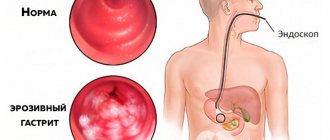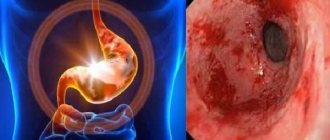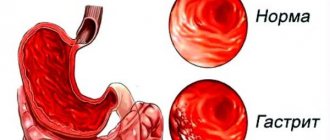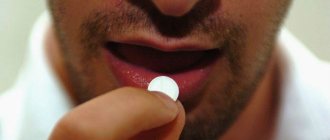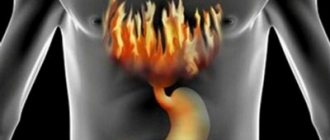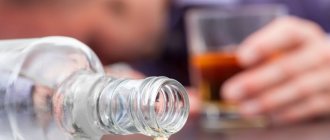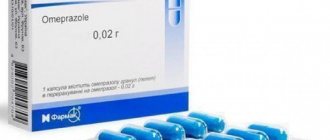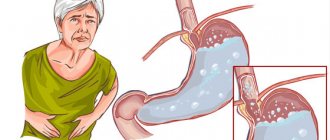Erosive antral gastritis is a chronic disease characterized by the formation of surface defects in the mucous membrane of the final part of the stomach. This pathology may be associated with Helicobacter pylori infection. The difference from simple catarrhal inflammation is that against the background of edema and hyperemia, erosions form on the mucous membrane.
The latter can lead to ulcers and cause bleeding. Erosive antral gastritis is most often chronic. The acute form is rarely observed. The prevalence of the disease is 2–18% among people undergoing EGD for epigastric pain.
Men get sick more often. Among children, mostly girls suffer from this disease. Gastritis of the antrum in its course often resembles a peptic ulcer. In the early stages, people do not go to the doctor. The final section of the stomach borders the duodenal bulb, so gastroduodenitis often develops.
Main reasons
Inflammation in the antrum is caused by several factors. The main reasons for the development of erosive gastritis are:
- uncontrolled use of tablet forms of NSAIDs and other gastrotoxic drugs;
- addiction;
- severe burns;
- mechanical injuries;
- alcoholism;
- penetration of infection;
- parasitic diseases;
- hormonal disorders;
- poor nutrition;
- smoking;
- high radiation exposure;
- duodeno-gastric reflux.
Inflammation can be primary or secondary. In the latter case, gastritis is caused by another pathology. These may be hyperparathyroidism, Crohn's disease, uremia, diabetes mellitus types 1 and 2, stomach cancer and sepsis.
Acute erosive gastritis of the antrum is most often associated with exposure to toxic substances. These may be drugs from the NSAID group (Diclofenac, Ketonal, Ibuprofen, Movalis), cocaine, alcohol, diphosphonates and cardiac glycosides. The stress factor plays an important role. Inflammation is possible against the background of acute renal pathology and tissue ischemia. The erosive form of gastritis is often associated with infection.
The mucous membrane may be damaged by cytomegaloviruses, streptococci, clostridia and Helicobacter bacteria. Less commonly, parasites (helminths) are the cause of erosive defects. An example is anisakidosis. Often inflammation develops against the background of insufficiency of the pyloric sphincter. In this case, the contents of the duodenum, along with pancreatic juice and bile, are thrown into the stomach and cause irritation of the mucous membrane.
The risk group includes people who eat poorly. Frequent consumption of spicy, coarse and fatty foods, canned food, carbonated water, coffee and alcohol negatively affects the gastrointestinal tract. Products with a high content of food additives (dyes, preservatives) are especially dangerous.
Causes of the disease
Erosions can be single or multiple; with a long course of the disease, areas of necrosis are formed, damaging large vessels and promoting the development of internal bleeding.
The development of erosive gastritis can be caused by the following factors:
- chronic gastrointestinal diseases;
- malignant tumors; thermal and chemical burns;
- smoking and drinking alcohol;
- taking hormonal drugs and cytostatics;
- the presence of hot and spicy foods in the diet;
- vascular pathologies.
Pathogenesis of disease development
Inflammation of the antral zone of the stomach is caused by an imbalance between the protective factors of the mucosa and the aggressive agent. In 90% of cases with the chronic form of the disease, Helicobacter bacteria are detected. The pyloric region has a higher pH value. This is where the bolus of food is prepared for passage into the small intestine.
There are additional secretory cells in the antrum. With their help, a mucin layer is formed, which protects the organ mucosa from irritation. When infection penetrates, the production of bicarbonates, mucus, polysaccharides and other necessary substances is disrupted. Helicobacter bacteria are acid resistant. For them, the optimal environment is with a pH value from 5.5 to 8. These microbes produce a special enzyme that promotes the formation of ammonia and carbon dioxide in the stomach.
Helicobacter bacteria produce protease. This enzyme promotes the breakdown of protein molecules of epithelial cells and phospholipids. Damage to the mucosa is also caused by the production of cytotoxin. Impaired cell function negatively affects the formation of gastrin, against the background of which the synthesis of hydrochloric acid increases. All this contributes to the appearance of erosion.
The essence of pathology
Erosive gastritis or erosive-ulcerative gastritis is one of the forms of the inflammatory process in the gastric mucosa, which results in the formation of small surface defects in the form of erosions. The erosive type differs from other types of gastritis by the appearance of extensive erosive areas against the background of an inflamed, reddened surface. Such damage sometimes covers the entire gastric surface. The development of erosive gastritis of the stomach begins with the formation of small wounds on the outer surface of the stomach and gradually covers a larger and larger area.
Clinical manifestations of the disease
Symptoms of chronic erosive gastritis are nonspecific. The most commonly observed symptoms are:
- heartburn;
- nausea;
- moderate pain in the epigastric zone;
- unstable stool;
- bloating;
- decreased appetite;
- vomiting with blood.
With the development of acute inflammation, the symptoms are more pronounced. When ulcers form in the antrum, the pain resembles that of an ulcer. It occurs on an empty stomach or 1–2 hours after eating. With hyperacid gastritis, sour belching is observed. As the pH increases, it goes rotten. Disruption of the digestive process causes unstable stool. Diarrhea gives way to constipation.
Symptoms of bleeding against the background of erosion damage are:
- vomiting with blood;
- melena;
- pale skin;
- tachycardia.
Signs of gastritis due to reflux are bitter belching, white coating on the tongue, bloating and an unpleasant taste in the mouth. Over time, inflammation with erosion leads to atrophy of the glands. In this case, the pain syndrome may disappear. Symptoms include decreased appetite, a feeling of fullness in the stomach, early satiety, and slight weight loss.
Causes of the disease
Erosive antral gastritis occurs due to the influence of the bacterium Helicobacter pylori.
Most often, erosive gastritis is diagnosed against the background of the negative influence of the bacterium Helicobacter pylori. The location of the disease most often is the antrum of the stomach.
Quite often, single lesions of the mucous membrane are observed. The formation of large areas of necrosis may also be observed.
Against this background, blood vessels are damaged, which leads to bleeding. Neoplasms on the gastric mucosa can appear against the background of:
- Smoking;
- Cancer;
- Burns;
- Stressful situations.
The pathological process quite often develops against the background of diseases of the digestive system of a chronic nature. Erosive gastritis is observed while taking certain medications. These include hormones, anti-inflammatory drugs, and cytostatics. Quite often the disease is diagnosed against the background of alcoholism or one-time consumption of large quantities of alcoholic beverages.
The causes of erosive gastritis are quite varied. In most cases, they depend on a person’s incorrect lifestyle.
Negative consequences of gastritis
In acute and chronic erosive gastritis, bleeding is often the first sign. They arise due to damage to blood vessels in the area of mucosal defects. This is a dangerous complication of gastritis. It causes the following symptoms:
- weakness;
- dizziness;
- arterial hypotension;
- decreased performance;
- frequent and rapid pulse;
- liquid, black stool mixed with coagulated blood;
- vomit;
- confusion;
- sweating
The more massive the bleeding, the more severe the condition of the patients. If erosive antral gastritis is not treated, ulcers may form and gastric bleeding may develop. This is a more serious disease that is difficult to treat and increases the risk of developing stomach cancer. Dangerous complications of gastritis are stenosis and deformation of the pylorus. If the symptoms of massive blood loss are left unattended, anemia and shock may develop.
Symptoms of erosive gastritis
The first sign of erosive gastritis is gastric bleeding, which manifests itself in the form of bloody vomiting.
Erosive gastritis of the antrum of the stomach causes pain in the epigastric region, bad breath, nausea and vomiting, diarrhea and constipation.
In severe forms of the disease, occult blood is detected in the stool.
Patient examination plan
With gastritis, the symptoms are not specific. To clarify the diagnosis, the following studies will be needed:
- FEGDS;
- general blood analysis;
- blood chemistry;
- linked immunosorbent assay;
- polymerase chain reaction;
- breath test;
- stool occult blood test;
- Ultrasound of the abdominal organs;
- biopsy with histological analysis;
- plain and contrast radiography;
- pH-metry.
With erosive gastritis in the final sections of the stomach, FEGDS reveals spotty hyperemia of the mucous membrane, erosion and edema. Increased exudation is possible due to narrowing of the pyloric region. During an endoscopic examination, a piece of tissue is taken from people with antral gastritis.
Before treatment, a urease test is performed to identify Helicobacter bacteria. If necessary, inoculation on a nutrient medium is required. In patients with gastric bleeding, stool must be examined for the presence of occult blood. Differential diagnosis is carried out with peptic ulcer, cholecystitis, tumors, pancreatitis and functional disorders.
Treatment of the disease
There are a number of reasons why the disease develops. All of them participate in this process separately from each other or in combinations. These reasons include:
- Helicobacter pylori causes inflammation of the mucous membrane, atrophy of its areas appears;
- autoimmune causes. Due to the activity of the process of autoantibody synthesis, the destruction of the mucosal cells occurs;
- heredity;
- stressful situations;
- presence of bad habits;
- eating disorder;
- long-term use of antibiotics, non-steroidal anti-inflammatory drugs.
Unexpected pain when eating food can last several hours.
During the development of the disease, the symptoms are mild, but later they intensify, which makes it possible to identify the disease:
- Unexpected pain that occurs after a while after eating and lasts for up to two hours. The pain is paroxysmal in nature.
- Belching, followed by a sour taste.
- Nausea progressing to vomiting.
- Flatulence.
- Diarrhea followed by constipation.
- Heartburn.
- Lack of appetite or decreased appetite.
- Weakness, fatigue, decreased performance.
- Melena, bleeding, which is observed when erosions exist.
The doctor makes a diagnosis for the patient based on data from fibrogastroduodenoscopy with biopsy, acidity measurements, blood tests, and x-ray examination.
If gastritis is detected, the specialist prescribes treatment consisting of two regimens, which the patient must follow for two weeks.
The first stage involves antibacterial therapy. The patient must use antibiotics that destroy microbes. It is recommended to use medications in combination that are responsible for improving the secretion of glands, reducing acidity, and having enveloping properties. To get rid of pain, you need to purchase antispasmodics, and to ease digestion and reduce stress, enzymatic preparations.
At the second stage, the doctor prescribes medications with regenerative properties that help restore the mucous membrane and normalize all important processes. During treatment, it is advisable to resort to vitamin therapy.
Detection of gastritis during a medical examination
Doctors, in addition to drug treatment, advise resorting to traditional medicine, which also helps with gastritis. During therapy use:
- Calendula, which has an anti-inflammatory, healing effect. The infusion is prepared from 2 tbsp. l. crushed calendula and boiling water. The mixture must be infused for up to three hours, with the lid closed. This infusion should be consumed before each meal, namely 30 minutes.
- Alcohol tincture of propolis is considered a natural antibacterial agent that suppresses harmful microorganisms in the diagnosis of antrum gastritis. To prepare the infusion, you will need 100 ml of water, which can be replaced with milk, as well as the approximate number of drops of pharmaceutical propolis in alcohol - about 30. The resulting medicine is consumed an hour before meals, 3-4 times a day.
- Kombucha is considered a good antibacterial agent; it is obtained by infusion, and then used 3 times a day, 1.5 hours before meals.
- Fresh raw potato juice for gastritis helps get rid of heartburn, pain, and infectious agents. To prepare the juice, 3-4 potatoes are used, the juice is drunk after preparation within 15 minutes. The reason for this is the short existence of the beneficial properties of potatoes.
- Aloe and honey relieve pain and eliminate the inflammatory reaction. To prepare the product, you need to grind the aloe to a pasty mass and add honey. You need to stick to the 50/50 ratio. This combination is taken 3 times a day, washed down with cold water. Such a course should not exceed three weeks.
- Sea buckthorn oil is used once a day; before use, one spoon of oil is dissolved in warm milk. The product helps the mucous membrane to perform intensive regeneration and restoration of its functions. You can use olive oil.
As a result of competent moderate treatment, the patient will be able to prevent the disease from progressing into a more serious illness.
The development of hyperplastic, erythematous or other antral gastritis can only be prevented by maintaining a healthy lifestyle. Prevention closely borders on protection from provoking factors:
- you need to give up smoking and alcohol abuse;
- it is important to lead a measured lifestyle without unnecessary stress and worries;
- diet is a necessary condition for a healthy body;
- Medicines must be taken under the strict supervision of doctors.
There are no “safe” types of disease that do not need to be treated. Moreover, even the primary catarrhal stage already indicates serious changes in the body. But timely detection of antral gastritis in any form will help the patient quickly get rid of provoking factors. If a person makes every effort to recover (diet, daily routine, giving up bad habits, systematically taking medications and folk remedies), then the pathology will go into stable remission.
This disease occurs against the background of changes in the gastric mucosa, morphologically similar to gastritis. When pathology is detected, there is a need for dynamic monitoring of patients, even in a state of remission.
Erosion in the antrum of the stomach is characteristic of acute and chronic gastritis, gastric and duodenal ulcers, and chronic duodenitis. But they can also have a secondary (symptomatic) nature of formation: occur in liver diseases, heart and pulmonary failure, atherosclerotic lesions of the aorta.
Erosive antral gastritis is a disease in which surface defects form on the mucous tissues in the final part of the stomach. This pathology is often caused by Helicobacter pylori infection. Unlike catarrhal inflammation, with erosive gastritis, in addition to edema and hyperemia of the mucous membrane, the formation of erosions occurs. Erosions can cause ulcers and lead to bleeding.
The course of erosive antral gastritis is often chronic. The acute form of the disease is observed in rare cases.
The prevalence of the disease reaches 18% among patients who consulted a gastroenterologist with epigastric pain and who underwent FEGDS. This disease most often affects men, and among children the disease usually occurs in girls.
When tested, the vast majority of patients - over 80% - are found to have the bacterium Helicobacter pylori in their bodies, which activates the development of gastritis. However, this microorganism does not act as a factor that triggers the disease. The bacterium is found even in tests of healthy people. But strong immunity prevents the development of atrophic diffuse or focal gastritis.
This is where the mechanism that causes the disease is triggered - autoimmune processes that suppress the activity of immature gland cells. Autoimmune reactions themselves have not been studied enough, and scientists only speculate on what causes them.
Autoimmune processes disrupt the regeneration of glandular cells, which are responsible for the normal production of hydrochloric acid. Atrophic gastritis is accompanied by the fact that instead of acid, the body produces protective mucus in large quantities. It is poorly involved in digestion and can lead to an intense decrease in stomach acidity.
Long-term disruption of the normal processes of regeneration and production of cells that secrete hydrochloric acid leads to the fact that the body completely loses the ability to produce normally functioning cells. This process can be called atrophy of the gastric walls. And it cannot be completely cured.
Autoimmune processes, bacterial activity and gastric atrophy can be triggered by one or more unhealthy factors:
- constant smoking and regular alcohol consumption;
- severe stress, emotional distress, nervous tension and other socio-psychological factors;
- penetration of bile acids from the duodenum into the stomach (reflux);
- long-term use of NSAIDs, hormonal drugs without a doctor’s prescription or with a gross violation of the course of treatment;
- exposure to harmful environmental factors - work in toxic production with vapors and other hazardous compounds;
- living in an area with high background radiation;
- imbalance of hormones responsible for digestive processes;
- metabolic problems;
- chronic course of infections in different parts of the body;
- food allergy, regular consumption of foods to which there is an intolerance;
- indirectly, the development of diffuse atrophic gastritis can be affected by heart and vascular diseases.
Treatment
If symptoms are present and the diagnosis is confirmed, treatment is required. It depends on the etiology of the disease. In cases of severe bleeding and the development of anemia, transfusion therapy is performed. Blood components are transfused according to indications. Iron supplements are prescribed.
Some patients require surgical treatment. It may be needed to ensure hemostasis (stopping blood). Clipping or electrocoagulation is performed. For gastritis with an inflamed antrum, lavage may be necessary. Anti-Helicobacter drugs must be included in the treatment regimen. The most commonly prescribed are macrolides, penicillins and tetracyclines.
5-nitroimidazole derivatives may be included in the treatment regimen. If the cause is helminths, then antiparasitic drugs are indicated. To prevent bleeding and other complications, antisecretory drugs and antacids are prescribed. The first group includes proton pump blockers (Omez, Pariet, Rabiet, Sanpraz). They disrupt the formation of hydrochloric acid.
If proton pump blockers are intolerant, histamine receptor blockers are used. To eliminate heartburn, antacids (Phosphalugel, Almagel, Gaviscon) are prescribed. In case of erosive lesions of the mucous membrane, gastroprotectors are indispensable. These include De-Nol and Venter. In the presence of vomiting, prokinetics are indicated. Diet for erosive gastritis of the antrum is an important aspect of therapy.
In the first hours after the development of acute inflammation, you need to fast. After this, table No. 1 is assigned. Dietary nutrition is aimed at maximally sparing the gastrointestinal tract. Therapeutic nutrition must be followed for at least 2 weeks. With this diet, you need to avoid eating spicy, fatty, fried and rough foods, carbonated drinks, alcohol, coffee, spices, fermented milk products, fresh bread, canned food, mushrooms and foods that enhance fermentation.
Features of treatment
Correctly chosen methods of treating chronic erosive gastritis can achieve stable remission and recovery. Before starting treatment, it is necessary to conduct a diagnosis, including several examinations.
A gastroenterologist examines the patient and analyzes his medical history. If erosive antral gastritis is suspected, the patient is recommended to undergo a comprehensive diagnostic examination, including laboratory tests and instrumental studies.
If the disease is caused by Helicobacter activity, then therapy is carried out using antibacterial agents. The patient is prescribed Tetracycline, Amoxicillin or Levofloxacin. The period of use is quite long, and if treatment is interrupted without permission, there is a possibility that the disease will develop into a treatment-resistant form. A large number of microbes will appear in the stomach, worsening your health. Such treatment is allowed only under the supervision of a physician.
During therapy, it is necessary to regulate the acidity of the stomach. This is necessary to minimize the aggressive effect of hydrochloric acid on the organ mucosa. For this purpose, antacids and proton pump blockers are used.
Among the antacids, the most effective are Maalox, Rennie, Almagel, etc. Each of these drugs has its own effect, so changing the medication is carried out only with the permission of a doctor.
To regulate the amount of stomach acid, proton pump inhibitors are prescribed. They reduce the intensity of hydrochloric acid formation. Gastric juice becomes less aggressive for the organ. Ranitidine and Omeprazole are used for this purpose. Tablets improve the patient’s condition, but can sharply worsen the process of digesting food.
If a person uses medications to suppress stomach acid, he may experience some difficulty digesting food. This problem can be eliminated by taking medications - Mezim, Festal and other drugs that stimulate the production of enzymes. Additional enzymes help improve food digestion and relieve symptoms of the disease.
Severe pain is relieved with medications. For this, the patient is prescribed antispasmodics and other medications. In most cases it is No-shpa or Papaverine.
To restore the integrity of the damaged gastric mucosa during gastritis, Iberogast or Trental are indicated, and for additional protection against the aggressive effects of hydrochloric acid on the gastric mucosa - De-Nol. It covers the mucous membrane with a thin film, which protects the epithelium from aggressive chemical influences, thereby accelerating the healing process.
If the patient has severe pain in the abdominal area, the stomach grows, drug therapy may be ineffective. The patient urgently needs to call an ambulance. Prolonged pain in the stomach in combination with increased temperature, thirst, and severe fatigue may indicate the development of the most dangerous complication of the ulcerative process - peritonitis.
Treatment of such pathology is exclusively emergency and surgical. If the patient undergoes surgery in the first hours, the postoperative period proceeds without complications. Delaying the operation causes extremely unfavorable consequences.
Diet for antral gastritis
Diet - a folk and therapeutic remedy for antral gastritis - must be followed. In acute and chronic periods, you need to control the amount of food consumed and its quality. Patients are advised to eat little and often. Portions should be small. Food should be chewed thoroughly or mashed as much as possible when cooking. Nutrition should be balanced.
Food must be at the optimal temperature, i.e. not cold and not hot. Cold food will take a long time to digest, further irritating the stomach. At the same time, hydrochloric acid is produced in large quantities, which is an additional factor in the formation of wounds. Hot food also irritates weak stomach walls.
Foods can be stewed and boiled, but never fried. You should learn to eat mushy and liquid foods. Smoked and salted dishes and marinades are strictly unacceptable. The following products are prohibited:
- sausages, including boiled ones;
- sweets;
- legumes;
- corn grits;
- bakery;
- all fatty varieties of meat and fish;
- ice cream;
- chocolate;
- broths (meat and vegetable);
- alcohol;
- strong tea and coffee;
- whole milk;
- freshly squeezed juices, especially citrus fruits.
You need to increase the amount of lean meat soups in your diet. The best porridges are buckwheat, pearl barley, and oatmeal. It is healthy to eat mashed potatoes (no need to add butter to it). Every day there should be fermented milk products on the table, for example kefir, sour cream, cottage cheese, yogurt. The fish should be steamed.
Among flour products, day-old baked goods and bread are allowed. Fresh flour products are not recommended because... cause heartburn and flatulence.
During treatment, drinking mineral waters is not recommended. They contribute to further deterioration of the gastric mucosa. Drinking this water can also cause the development of an ulcerative process.
In the folk treatment of this disease, folk recipes are used - cabbage and potato juices, flaxseeds, decoctions of burdock and calamus root, and other stomach preparations.
Etiology of the disease
For a detailed consideration of what it is - erosive antrum gastritis, it is necessary to consider the etiology of the disease. The main cause of the development of the disease is the pathological effect of gastric juice on the surface of the mucous membrane.
At the same time, this effect of gastric juice is due to a number of etiological factors, among which the most significant are the following:
- Infection of the stomach with gram-negative bacteria of the Helicobacter pylori species, less commonly with other bacteria.
- Malnutrition and poor diet, including large amounts of sour and spicy foods and drinks that irritate the gastric mucosa.
- The presence of bad habits, in particular alcoholism and smoking.
- Long-term use of medications, as well as cases of their overdose or side effects from taking them. In particular, the antral form of gastritis most often develops when taking glucocorticoid steroid drugs, ascorbic acid and non-steroidal anti-inflammatory drugs.
- Chronic stress.
- The presence of other chronic stomach diseases.
It is characteristic that for the development of the bacterial form of gastritis, it is important to have low rather than increased acidity - this is the optimal environment for the development of bacteria and fungi. After a sufficiently large number of Helicobacter bacteria develop in a slightly acidic environment, the latter are located on the epithelial tissue of the stomach and also catalyze the formation of urea into ammonia, which, in turn, reduces the acidity of the stomach. As a result of the development of a massive infection center, rapid death of epithelial cells occurs. As a result of this, open and unprotected areas of the stomach begin to be corroded by gastric juice and ammonia formations, which ultimately cause small ulcerations that grow more and more over time.
Diagnostics
The erosive form of gastritis is considered a serious deviation in the functioning of the stomach; for the sake of your own health, you should immediately consult a doctor. A timely diagnosis and appropriate treatment contribute to the successful overcoming of the disease.
When diagnosing a patient who complains of abdominal pain, instrumental research methods are used. Fibrogastroscopy with targeted biopsy is considered an effective and efficient method of diagnosis. The method accurately determines the location of scars and the severity of damage to the gastric mucosa.
Therapy is carried out under the close supervision of a doctor - until the disease is completely eliminated, the patient is in danger. Often, severe hemorrhage causes death; if gastritis is suspected, the disease must be treated immediately.
Making a correct diagnosis depends on a thorough history taking. A significant loss of body weight in a short period of time, uncontrolled medication use and alcohol consumption speaks volumes.
Identification of the disease in question includes a number of examinations, both laboratory and instrumental. Patients undergo a blood test for general and biochemical parameters. Leukocytosis and an increase in ESR will help identify pathology. An important blood indicator is the level of bilirubin and protein, as well as transaminase.
Instrumental examination methods include:
- Ultrasound examination of internal organs. Necessary for differential diagnosis.
- Fibrogastroduodenoscopy (FGDS). Allows you to identify all changes and defects on the surface of the gastric mucosa.
- Breath test. It is carried out to detect the presence of Helicobacter pylori in the stomach.
Based on these data, the extent of spread of superficial antral gastritis is determined. The disease can be mild, moderate or severe.
Early detection gives a better chance of successful recovery. Gastropathy is usually diagnosed during tests for other disorders. The conclusion is made upon confirmation of morphological changes in the mucosa, characteristic of inflammatory processes, and only after fibrogastroduodenoscopy (FGDS).
Before diagnosis, you should follow some recommendations: do not drink alcohol, fatty foods, or carbonated drinks for several days. Eliminate, or at least reduce, the number of cigarettes you smoke.
Examination of a person and identification of the disease is carried out using several methods:
- Radiography.
- Biopsy.
- FEGD. Indicates spots in the mucous membrane, detects swelling and bleeding, and areas of erosion. Weakness of the pylorus provokes fluid stagnation. Stomach acidity is studied using pH measurements and further examination of the material.
- Digital tomography.
- Ultrasound.
- Gastroscopy. It reveals changes in gastric relief, spasmodic contractions of the pylorus, and chaotic movement of stomach contents.
Types of antral gastritis
Erosive gastritis of the antrum of the stomach is divided into several types, depending on the characteristics of the course and pathology of the disease. In medicine, the following forms are distinguished:
- Acute erosive antral gastritis. In other words, an acute form of the disease, which is a disease with characteristic symptoms, but has a more obvious course with aggravated symptoms.
- Chronic antrum gastritis. The symptoms of the disease are dull and may not bother the patient for a long time, but periodically develop into an acute form.
According to the degree of development of erosive foci, the following types are distinguished:
- Gastritis of the antrum with complete erosions. It is characterized by the formation of small cone-shaped outgrowths, in the center of which there are small ulcerations or depressions. In most cases, no visible changes are observed in the underlying tissues, although puffiness and swelling may occasionally appear.
- Erosive antrum gastritis with incomplete erosions (superficial). It is characterized by flat, in relation to the surface of the stomach, defective formations, with different shapes and sizes. They are barely noticeable on the surface of the antrum of the stomach, but can be noticeable in the case of hyperemic areas surrounding such defective areas.
- Hemorrhagic form. It is characterized by many small ulcerations, which in appearance resemble small punctures on the surface of the gastric mucosa. The color of the damaged areas ranges from light cherry to bright red, the underlying surface is hyperemic, in some cases they significantly exceed the size of the hemorrhagic ulceration itself. As a rule, bleeding is observed in this area.
Complete erosions, as a rule, have a widespread distribution on the gastric mucosa and arise as a result of chronic inflammatory processes.
This fact must be taken into account when performing endoscopic diagnosis.
Types and treatment of antrum gastritis
In the antrum of the stomach, food undergoes final processing, special substances - bicarbonates - process the food mass, lowering its acidity before it goes further to the intestines, and the mucus produced protects the stomach from the effects of acid.
Another, no less important function of this section is to use muscles to push a bolus of food into the duodenum.
Antrum gastritis disrupts both of these functions and the digestive tract no longer copes with its work properly. The disease has both acute and chronic forms.
Erosive antrum gastritis in acute form is detected as a consequence of thermal or chemical burns, gastric trauma, or infection with pathogenic microorganisms.
Its characteristic symptoms are blood in the vomit and dark-colored stool.
The chronic form develops as a result of uncontrolled use of nonsteroidal anti-inflammatory drugs, sulfonamides, viral diseases, and Crohn's disease.
Chronic erosive antrum gastritis does not have such obvious symptoms as acute ones; few people react to periodically appearing nausea.
As a result, the disease progresses and can make itself felt by stomach bleeding, and only then does the patient see a doctor.
Often the process is already advanced and treatment will have to be carried out throughout life.
Damage to the lower third of the stomach can manifest itself in various types of gastritis, some of them have a favorable outcome, others are so dangerous that they can develop into oncology.
Its main types and characteristics:
- Superficial is the least dangerous type; most patients who start therapeutic measures in a timely manner are completely cured without further consequences. This antrum gastritis affects only the upper layer of the stomach walls, the glands remain intact, and scar tissue does not form.
- Focal - the lesion affects individual areas of the organ, which, due to prolonged inactivity, atrophy and lose viability.
- Atrophic - degenerate cells lose the ability to produce gastric juice, food is not digested to the required consistency, begins to ferment in the stomach, releasing excess gases, which causes bloating, heaviness in the abdomen, and stool disorders. The atrophic process can be bacterial or autoimmune.
- Hyperplastic - this antrum gastritis threatens the formation of polyps, cysts and other neoplasms, including malignant ones. In many cases, the epithelial cells of the stomach are replaced by intestinal ones, and thickening of the mucous membrane is observed.
- Erosive - the name speaks for itself. With this type of gastritis, the mucous membrane is covered with ulcerative and erosive inflammation, scars form, and bleeding occurs at times.
The lower gastric section is most susceptible to attacks by Helicobacter; they multiply faster in it than in other parts of the stomach, therefore it is in the antrum that chronic erosive antrum gastritis most often develops.
Clinical picture of antral gastritis
Erosive gastropathy of the antrum of the stomach is in many ways similar to ordinary gastritis - this also applies to the symptoms of the disease. The only difference in the clinical picture is the nature of the location of the infectious focus, which provokes the development of symptoms. Considering the proximity of the location of the antrum of the stomach to the duodenum, the patient and doctors during the initial diagnosis may confuse the nature of the pain (especially radiating) and consider not gastritis, but inflammatory diseases of the duodenum.
The disease is characterized by a clinical picture that includes the following symptoms:
- Feeling of discomfort and burning in the epigastric area;
- Dyspeptic disorders, represented by bloating, nausea, belching and unstable stool;
- In some cases, vomiting with small amounts of bloody discharge is possible;
- The chronic form is accompanied by general weakness, increased fatigue and sweating during sleep;
- Spasmodic pain in the lower part of the stomach;
- A change in taste sensations, as a result of which the patient may refuse food that was previously preferable to him.
The latter is characterized by blurred and implicit symptoms, which can only slightly affect the patient’s life. However, the end result may be the development of massive erosive damage to the stomach, which leads to bleeding. In this case, the symptoms are typical, as for all types of bleeding - pallor of the skin, a twilight state of consciousness, fainting, increased body temperature. Such symptoms indicate the need for urgent hospitalization, since further development of symptoms can lead to death.
Prognosis and prevention of pathology
With qualified treatment and compliance with all medical recommendations, ulcerative lesions are eliminated in 10-15 days. The chronic form of antral erosion is especially difficult to treat; in 25% of cases it is accompanied by complications and unpleasant consequences.
In order to prevent the development of erosive pathologies in the stomach, it is sufficient to observe the following measures:
- nutrition must be complete, correct, at strictly established times;
- it is necessary to stop abusing alcoholic beverages and tobacco products;
- avoid stressful situations and emotional stress;
- undergo regular medical examination;
- strengthen the immune system - an active lifestyle, hardening the body, playing sports, taking vitamin and mineral complexes;
- timely treatment of pathologies associated with the stomach and intestinal system.
It is important to remember that pathologies associated with the gastrointestinal tract should not be left to chance or self-medicated. Undesirable consequences can only be avoided through medical treatment.
Diagnosis of the disease
Clinical diagnosis and the final choice of treatment method for the disease depend on the results of the diagnosis. To accurately determine the type of gastritis (in our case, the antrum of the stomach), it is necessary to go through the following stages of the study:
- Clinical diagnosis, which includes collecting anamnesis, studying the patient’s medical record, questioning him about symptoms and lifestyle (which makes it possible to differentiate the final diagnosis), as well as drawing up a further diagnostic plan.
- Endoscopy with biopsy - procedures are performed together. The condition of the gastric mucosa is studied, the nature of visible changes in the mucous membrane is studied, and the possibility of the presence of malignant neoplasms is also studied. For subsequent biopsy, as well as to clarify the presence of Helicobacter, at least 5 samples are taken, including 2 samples from the antrum of the stomach.
- General laboratory diagnostics. Provides for the collection and analysis of blood (both biochemical and clinical analysis is carried out), urine, and feces.
- Ultrasound - the procedure allows you to determine the presence of concomitant diseases of other organs of the digestive system.
- Intragastric acidity measurement. Allows you to determine functional disorders and the degree of acidity and secretion production in the stomach.
Based on the diagnostic results, as well as when confirming the diagnosis of antral gastritis and accurately determining its form and degree of development, doctors prescribe the most appropriate and appropriate treatment.
Complications of erosive antrum
With advanced forms of pyloric ulcerative gastritis and the lack of proper treatment, quite dangerous complications can arise that result in disability or death of the patient, among them:
- severe bleeding;
- transition of the disease to a chronic form;
- damage to other organs of the gastrointestinal tract, liver, kidneys;
- peptic ulcer of the epigastrium and duodenum;
- gastric cysts and polyps;
- malignant neoplasms.
Treatment of antral gastritis
How is erosive antral gastritis treated? Since the cause of the disease in the vast majority of cases is infection of the antrum with bacteria of the genus Helicobacter pylori, the most acceptable form of treatment is the use of bacterial eradication. It is this type of treatment that we will consider, without affecting the others, which in most cases are evidence of the presence of another form of gastritis.
Ideal eradication requires compliance with the following requirements:
- Maintaining a constantly high level of bacterial eradication;
- Simplified medication regimen;
- Reducing the frequency and likelihood of side effects;
- Eradication should include an impact not only on the main, but also on resistant strains of bacteria;
- Stopping the development of the ulcerative process.
The most effective way to treat the disease is to use a three-line treatment regimen, according to the recommendations of the Scientific Society of Gastroenterologists of the Russian Federation or the Maastricht Consensus Conference.
In the first case, it is recommended to carry out therapy involving the following steps:
- 10-14-day therapy involving proton pump inhibitors (standard dosages, twice a day), clarithromycin and amoxicillin;
- 10-14-day therapy, involving standard dosages of PPI, amoxicin, clarithromycin and tripotassium bismuth dicitrate;
- Various variations in dosage and duration of treatment based on the two previous methods.
In the second case, it is permissible to carry out treatment according to the following parameters:
- 7-day therapy, including taking PPIs (lansoprazole, rabeprazole, etc.) in therapeutic dosages, clarithromycin and amoxicillin;
- Therapy involving treatment with bismuth subcitrate, metronidazole, tetracycline and a type of PPI.
If treatment does not bring significant results, replacement therapy can be used, which involves taking other drugs that differ from those listed above.
Thus, nitrofuran drugs, rifaximin, as well as other drugs that replace those used in the event of resistance development in some Helicobacter strains can be used.
As a conclusion, we note that treatment of the disease should be carried out only if all requirements prescribed by the doctor are met. The use of any traditional medicine is highly discouraged, since such remedies may not only fail to provide the desired therapeutic effect, but also have a detrimental effect on the body, aggravating the development of gastritis.
Treatment with folk remedies
They are used at the beginning of the development of the disease for aching pain, sour belching, and attacks of heartburn.
Treatment of erosive antral gastritis with folk remedies can be carried out with potato juice, which is made in the morning in the amount of a glass, drunk an hour before meals. After taking it, you need to lie down for half an hour. For breakfast, it is better to eat oatmeal and unsweetened tea. It is used for 10 days, then a break is taken for the same period and then taken again until healing occurs.
You can also be treated with juice from white cabbage leaves. Warm up the finished juice a little and drink half a glass half an hour before meals. It can be stored in the refrigerator for 2 days.
You can use decoctions of medicinal herbs:
- The roots of calamus are crushed to obtain 1 tsp. product. The raw material is poured with a glass of boiling water, wrapped and infused for 40 minutes. Take warm, strained, half an hour before meals.
- Burdock roots are crushed to obtain 1 tsp. product, pour 0.5 liters of boiling water and leave for 12 hours in a covered container. Drink half a glass warm throughout the day.
- You can take perennial aloe juice 1 tsp. half an hour before meals for 1.5 months (plants no younger than 3 years of age are used).
- Pour grape vodka (0.5 l) over plantain leaves, boil and simmer for 5 minutes, strain, pour into a bottle and seal. Take 1 tbsp half an hour before meals. l.
Herbal infusions are also used (for example, lemon balm and mint 15 g each, other herbs that relieve inflammatory processes in the gastric mucosa).
Treatment with folk remedies must be carried out with the obligatory consultation of a doctor.
Principles of treatment
Erosive antrum gastritis requires complex treatment. Often, pathology is caused by not one, but several reasons, and in order to successfully cope with the disease, all provoking factors must be eliminated. Therapeutic measures include:
- taking medications;
- physiotherapy;
- diet;
- folk treatment during remission;
- surgical intervention (according to indications).
In the acute course of the disease, symptoms develop acutely. The patient's condition is rapidly deteriorating. If a large area of the gastric mucosa is affected by erosion, a complication is possible - internal bleeding. Therefore, if a diagnosis is made: acute erosive gastritis of the antrum of the stomach, inpatient treatment is mandatory. After acute symptoms are relieved, the patient carries out further treatment measures at home.
During the period of remission, as well as chronic erosive antral gastritis, treatment is carried out with folk remedies. This makes it possible to significantly reduce the risk of relapses and restore the gastric mucosa.
Treatment of gastric pathology
The erosive form of antrum gastritis requires timely treatment. It begins with cleansing the stomach and intestinal system of food debris, toxins and waste deposits using the fasting method. In this case, you must completely abstain from eating for 2-3 days, drinking weak sweet tea or still mineral water. You can also perform an enema cleansing of the intestines.
Then the patient must follow a diet. Food should be gentle and not irritate the walls of the stomach - low-fat broths, cereals, stewed or steamed vegetables and fish. Fried, spicy, fatty foods, canned and sour foods are excluded from the diet.
It is recommended to drink large amounts of liquid in the form of rosehip decoctions, dried fruit compotes, and mineral water.
Erosive antrum must be treated with the complex use of various medications in the following areas:
- antibacterial direction - to destroy Helicobacter, antibiotics of 3 or 4 types are prescribed (Tetracycline, Amoxicillin, Metronidazole, etc.);
- relief of inflammatory processes - NSAIDs and medicinal herbs;
- to reduce acidity - drugs that reduce the secretory function of the stomach and antacids (Omeprazole, Omez, Ranitizin, etc.);
- to restore the function of the glands and tissues of the stomach - Inosine, Kanitin, anabolic steroids, sea buckthorn fruit oil;
- to relieve a spasmodic state - antispasmodic drugs (Drotaverine, Spazmalgon, Papaverine).
- to relieve pain - painkillers;
- strengthening therapy - prescribing vitamins and minerals, immunomodulators.
Important information: Diet and what you can eat for chronic gastritis
If acute gastric or intestinal bleeding is detected, surgical intervention is required. At the stage of remission after healing of ulcers, it is possible to prescribe physiotherapeutic procedures - electrophoresis, phonophoresis, ozone and laser therapy.
As a complex therapy for stomach diseases, the use of traditional methods of treatment is recommended. There are a large number of different recipes using honey, aloe leaf juice, decoctions of oak bark, chamomile, and St. John's wort.
Fresh potato and cabbage juices, tinctures from burdock roots, calamus, medicinal drinks from chamomile and linden, mint leaves, and flax seeds have a good healing and enveloping effect.
Drug therapy
A characteristic feature of the erosive type of disease is the appearance of ulcerations on the gastric mucosa. At first they are single, but then they can merge into large areas of damage. This is very dangerous because there is a risk of internal bleeding. Drug therapy is aimed at eliminating the aggressive effects of gastric juice. It is its increased amount or hyperacidity that causes erosion. In addition, drugs are prescribed that promote the regeneration of the mucous membrane.
It should be noted that the bacteria X. pylori are a common cause of the erosive form of the disease. To destroy it, antibacterial therapy is carried out according to a certain scheme. This treatment includes the use of antibiotics. They are the ones who can destroy microorganisms.
But Helicobacter is quite resistant to antimicrobial drugs, so a regimen of two antibiotics ( Amoxiclav , Klacid , Clarithromycin , Flemoxin ) and a proton pump inhibitor ( Pariet, Omeprazole , Lanzoptol ) is used. This scheme is used for a week.
After 2-3 days, the patient notices an improvement in the condition. The symptoms go away, but this does not mean that complete recovery has occurred. Therefore, you cannot stop the course, but complete it completely. Only in this case will the bacteria die. If you stop treatment “halfway”, then the microbes will develop resistance to the drugs and it will be more difficult to remove them.
The second regimen for combating Helicobacter is designed for a course of two weeks and contains two antibiotics (Metronidazole, Tetracycline), a proton pump inhibitor ( Omez , Pantoprazole ) and a drug containing bismuth ( De-nol , Bismuth subcitrate ). After a course of treatment according to one of the regimens, the patient should take one of the listed drugs for 1.5 months ( Omez , Omeprazole , Ranitidine , Nexium , Gastrosidine ). Such therapy after antibacterial treatment promotes complete restoration of the mucosa and healing of erosions.
The inpatient basic treatment method includes the use of drugs from different groups.
- Antacids reduce the acidity of hydrochloric acid and thereby reduce its aggressive effect on the walls of the stomach ( Almagel , Maalox , Phosphalugel ).
- Alginates create a protective film on the surface of food and thereby ensure a gentle effect of food on the gastric mucosa ( Gaviscon , Laminal ).
- Proton pump inhibitors reduce the production of gastric juice and reduce its harmful effect on the gastric mucosa ( Omeprazole , Pantoprazole , Omez ).
- Enzymatic preparations promote better digestion of food ( Mezim , Creon , panzinorm ).
- Prokinetics enhance gastric motility, promote better movement of food through the gastrointestinal tract, and eliminate congestive processes ( Motilium , Domperidone , Metoclopramide ).
- To restore the walls of the stomach and heal erosive defects, regenerating drugs ( Trental ) are prescribed.
- To relieve pain, antispasmodics are given ( No-shpa , Drotaverine ).
- If internal bleeding is suspected, Vikasol or Etamzilat .
To strengthen the general condition of the patient, vitamin therapy with group B drugs is recommended.
Complication during the course of the disease
Long-term chronic course of the disease often leads to hidden gastric bleeding from erosions. Pathology with accompanying bleeding is called erosive-hemorrhagic gastritis. Superficial lesions on the anterior and posterior walls, as well as the gastric fundus, rarely secrete blood. Dangerous in this regard are large, numerous, fairly deep erosions and ulcers due to reflux. Bleeding is most likely when the lesion is localized in areas with lesser curvature, where larger blood vessels lie. The likelihood of the appearance of a hemorrhagic form is increased by the presence of hypertension and poor blood clotting, as well as the use of certain medications (Aspirin, Heparin, Diclofenac, etc.).
Erosive-hemorrhagic gastritis is manifested by the following symptoms:
- decrease in pain intensity as bleeding occurs;
- vomiting with blood, most often having a brown discharge;
- signs of anemia: dizziness, pale skin, decreased blood pressure, tachycardia;
- darkening of the stool due to the presence of blood after exposure to gastric juice.
Physiotherapy
Physiotherapeutic treatment methods are aimed at strengthening the nervous system, restoring gastric motility, relieving inflammation and spasm of the mucous membrane. Use:
- UHF;
- cryotherapy;
- electrosleep;
- aerotherapy;
- infrared laser;
- ultrasound;
- electrophoresis.
Useful video
You can find out how the disease develops and is treated in this video.
Bile reflux
Duodeno-gastric reflux is a syndrome that accompanies diseases of the gastrointestinal tract: inflammation of the epigastrium, ulcers or duodenitis. The disease is characterized by the release of bile from the duodenum into the stomach.
The syndrome progresses as a result of pathology of duodenal patency, which causes pressure in the duodenum to increase; the pyloric closure mechanism becomes weaker. Among the causes are microbial imbalance, hernia, pregnancy, low tone of the esophageal muscles, and concomitant medications.
Duodeno-gastric reflux is associated with other diseases of the digestive system, the symptoms are similar. In some cases, the disease does not manifest itself, only sometimes making itself felt during sleep or when doing physical exercise. It is believed that in such situations nothing threatens the human digestive system.
Diagnosis and treatment
Diagnosing the syndrome is not difficult. It is recommended to undergo fibrogastroduodenoscopy, examine the acidity level of the cardiac epigastrium and the lower third of the esophagus. An ultrasound of the abdominal cavity and an x-ray of the stomach are prescribed. An accurate examination of acidity contributes to the correct diagnosis. Some doctors insist on overnight monitoring, which will not take into account the effect on the acidity level of food or medications taken.
Treatment of duodenogastric reflux involves ensuring the normal functioning of the stomach and duodenum. Diet contributes to healing: it is important for the patient to eat more often, but limit it to small portions. Alcohol and smoking are strictly prohibited during and after treatment.
Nutrition
In the acute period, the patient is prescribed diet table No. 1, followed by transition to diet No. 5. Patients with an erosive form of the disease should not eat foods that stimulate the production of gastric juice, as well as foods, vegetables and fruits containing plant acids. Excluded:
- fried;
- spicy;
- spices;
- fresh bakery;
- baked goods;
- vegetables with essential oils (onions, garlic).
The menu includes steamed food, baked or stewed vegetables, and various cereals. It is better to replace butter with vegetable oil, but it should not be heat treated. Only low-fat varieties of meat are recommended. Meals should be frequent, the dishes should be easily digestible, and the portions should not be large. This technique makes it possible to quickly restore damaged mucous membranes and normalize the digestion process.
Measures to prevent gastritis
Erosive gastritis can be cured with medications and diet, but it is easier to prevent it. To do this you need:
- treat existing diseases of the digestive system;
- carry out sanitation of foci of acute and chronic infection;
- wash your hands before eating;
- stop eating contaminated products;
- eat only from clean dishes;
- eat 4–5 times a day at equal intervals;
- do not use drugs and alcohol;
- steam or boil food;
- do not consume foods and drinks that irritate the gastric mucosa;
- no smoking;
- move more;
- do not be exposed to strong radiation;
- eliminate stress.
The condition of the gastric mucosa and its protective properties largely depend on lifestyle and the state of the immune system. To prevent complications with developed gastritis, it is necessary to contact a gastroenterologist at the first complaints. Thus, the erosive form of inflammation of the stomach poses a danger to patients due to possible bleeding and the formation of ulcers.
Inflammation with wound formation
Erosive gastroduodenitis differs from other forms of duodenitis by the formation of many small wounds on the mucous membrane of the stomach and duodenum. Often an ulcer progresses based on the disease.
The manifestation of the disease depends on the location of the pathology. Most often, patients are worried about weakness, insomnia and headaches. There is a feeling of nausea, sometimes abdominal pain. No appetite. The main distinguishing sign of erosive gastroduodenitis is nausea with blood in the morning and at noon.
The formation of pathology is influenced by internal and external factors. External causes include all types of inflammation of the digestive organs. Among the internal factors there are:
- High level of acidity;
- Throwing the contents of the duodenum into the stomach;
- Liver diseases;
- Infections.
